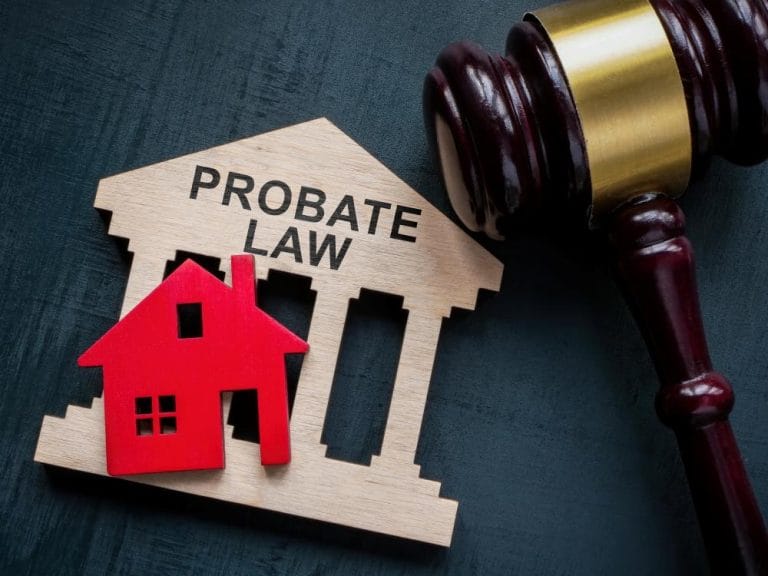
When a loved one passes away, families are often left asking the same question: does this estate need to go through probate? In California, the answer depends less on titles and more on numbers. Certain assets can bypass the court entirely, while others must be counted toward a legal threshold.
At Price Law Firm, APC, we guide families through these rules every day, helping them understand when probate is required and what alternatives may be available. This article explains the value limits, how assets are calculated, and which property can transfer more simply.
California’s Probate Threshold: An Overview
California sets a dollar limit for estates that trigger formal probate, and that limit adjusts over time for inflation. The exact amount depends on the date of death, not when you start paperwork. If the estate that counts for probate stays at or below the limit, you can often use simplified procedures.
| Date of Death | Probate Threshold |
| On or after April 1, 2025 | $208,850 |
| On or after April 1, 2022, and before April 1, 2025 | $184,500 |
| Before April 1, 2022 | $166,250 |
The date of death controls which number applies. That single fact can change whether a family needs formal probate or a simpler route.
Calculating the Estate’s Value
To see if an estate crosses the limit, you total the value of real and personal property that is subject to probate. Use fair market value as of the date of death, not what the asset later sold for. Do not subtract liens or mortgages during this threshold check.
Assets commonly counted include:
- Real estate titled only in the decedent’s name, such as a house, condo, or land.
- Bank and brokerage accounts without a beneficiary or joint owner.
- Stocks, bonds, business interests, promissory notes, and intellectual property.
- Vehicles, boats, and valuable personal items like jewelry or collections.
Keep good records as you total things up. A professional appraisal can be helpful for real estate or hard-to-value collections.
Assets Excluded From Probate Calculation
Not every asset is counted for this threshold. Some property transfers outside the court process, which means it does not add to the total that triggers probate.
- Assets in a living trust, which pass under the trust terms without court oversight.
- Jointly owned property with right of survivorship, including joint tenancy homes and shared bank accounts.
- Community property with right of survivorship between spouses or registered domestic partners.
- Accounts with beneficiary designations, such as life insurance, 401(k)s, IRAs, pensions, and annuities.
- Payable-on-Death bank accounts and Transfer-on-Death investment accounts.
If a beneficiary designation is missing or outdated, that asset can end up in probate. A quick beneficiary check today can save your family time later.
Alternatives to Formal Probate in California
If the estate is at or below the threshold, California offers streamlined paths that can free families from a long court case. Each option has rules on timing, asset type, and who must sign.
Small Estate Affidavit
For estates made up of personal property only, and valued below the threshold for the date of death, heirs can often collect assets with a sworn statement. You can use this procedure 40 days after death. All persons entitled to receive assets must sign, and the signatures must be notarized under Probate Code § 13100.
Banks and brokerages usually provide their own forms. Attach a death certificate and any statements that show the account balance on the date of death.
Petition for Succession to Real Property
When the estate is under the threshold and includes California real estate, heirs can file a petition asking the court to confirm who inherits the property. This filing happens at least 40 days after the death. There must be California real property for this procedure to apply.
The court sets a hearing date, then signs an order that can be recorded with the county to pass title. This option is faster than full probate for qualifying estates.
Spousal Property Petition
A surviving spouse or registered domestic partner can use a spousal property petition to confirm and transfer property to the survivor. There is no dollar limit for this petition. All property covered must go outright to the survivor, either under a will or under intestate rules.
This tool often works well when most assets were community property or already titled in both names. It can shorten the process and reduce costs for the surviving spouse.
Consequences of Probate
Formal probate is workable, but it is slow and public. Families often ask why they should plan to avoid it, and the reasons are practical.
- Time. Many cases take nine months to two years, and complicated estates can take longer.
- Cost. Court filing fees, attorney fees, and appraisal expenses reduce what beneficiaries receive.
- Privacy. Filings are public, which can expose family finances and beneficiary details.
For some families, probate also brings stress from deadlines, claims, and notices. Clear planning can calm all that down.
How Proper Estate Planning Can Help
A thoughtful plan can keep your estate below the threshold or move assets outside probate entirely. The right steps can also make life easier for the person handling your affairs.
Living trusts are a strong tool since assets titled to the trust transfer privately under the trust terms. We also encourage regular checkups for beneficiary designations on retirement accounts and life insurance since those move outside probate when they are current.
Some families add joint ownership with right of survivorship on certain accounts or property. That approach needs care to avoid tax or creditor issues, so it is smart to talk through choices before changing titles.
Safeguard Your Family’s Future – Contact Price Law Firm, APC, Today
At Price Law Firm, APC, we focus on clear plans that protect your savings and make transfers smoother for the people you love. If you are unsure whether probate is required, or want a plan that steers clear of it, we can help you sort the details. Call 909-328-7000 or reach us through our Contact Us page to schedule a conversation. We welcome your questions and work hard to make the next steps feel manageable.








